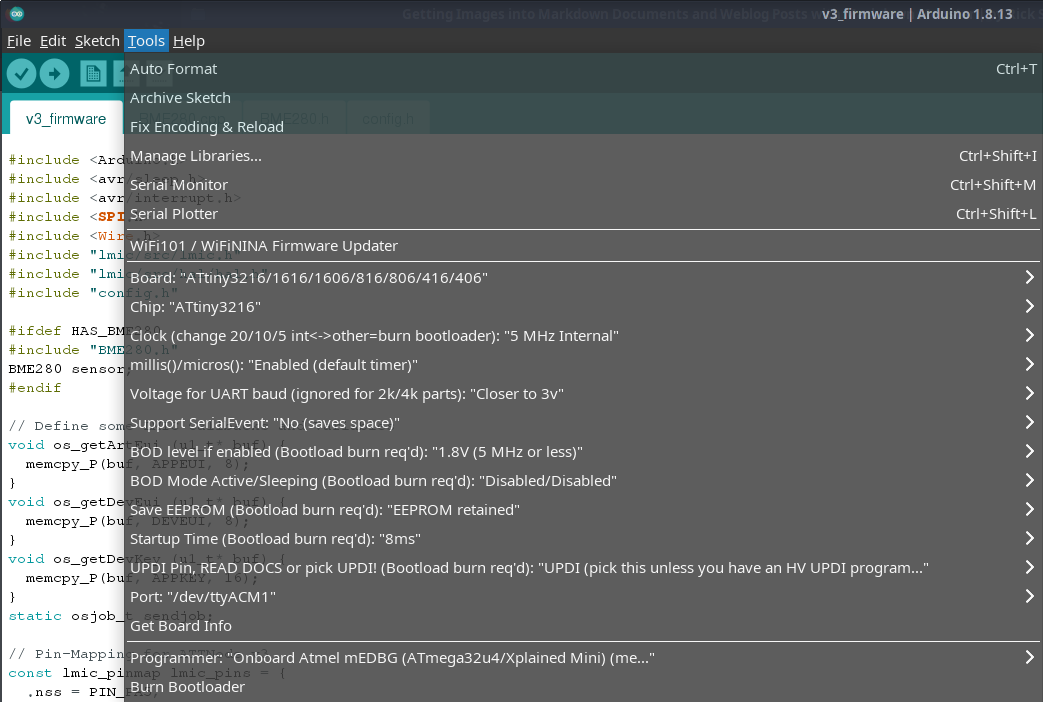| firmware | ||
| .gitignore | ||
| ide_settings.png | ||
| README.md | ||
ATTNode v3 Firmware (WiP)
Disclaimer
THIS IS STILL WORK IN PROGRESS!
Documentation
The full documentation for firmware options, payload decoders and programming can be found at attno.de
Configuration and Programming
This is the Work in Progress Repository for ATTNode v3 compatible firmware. At the moment it supports LoRa communication using OTAA and a BME280 or SHT21 sensor, as well as deep sleep between measurements.
As there is no PlatformIO Support for the ATTiny3216 yet, it is (for now) developed using Arduino IDE and the MegaTinyCore. You also need to set the correct Settings for programming the ATTiny3216 in ArduionIDE. Here is a screenshot of the settings I use:
You also need to install the MCCI Arduino LMIC Library form the IDEs Library Manager or from https://github.com/mcci-catena/arduino-lmic
Before Compiling and Flashing make sure to copy config.h.example to config.h and set your LoRa OTAA Keys there. You can also set the Sending Interval and used Sensors there.
Programming is done using a MicroUPDI Programmer - for other pogramming variants see the MegaTinyCore documentation.
Configuring via Downlink
It is possible to change the sending interval via Downlink-Packets at runtime. The time between Transmits is specified in minutes (or more exactly, 64 Second intervals) and has to be sent as a 2 byte value, which will be interpreted as an uint. so for example 0x0001 means 1 Minute, 0x0002 means 2 Minutes and so on. Sending 0xFFFF resets the value to the compiled in default.
Acknowledgements
Parts of this code where kindly provided by @shempe
